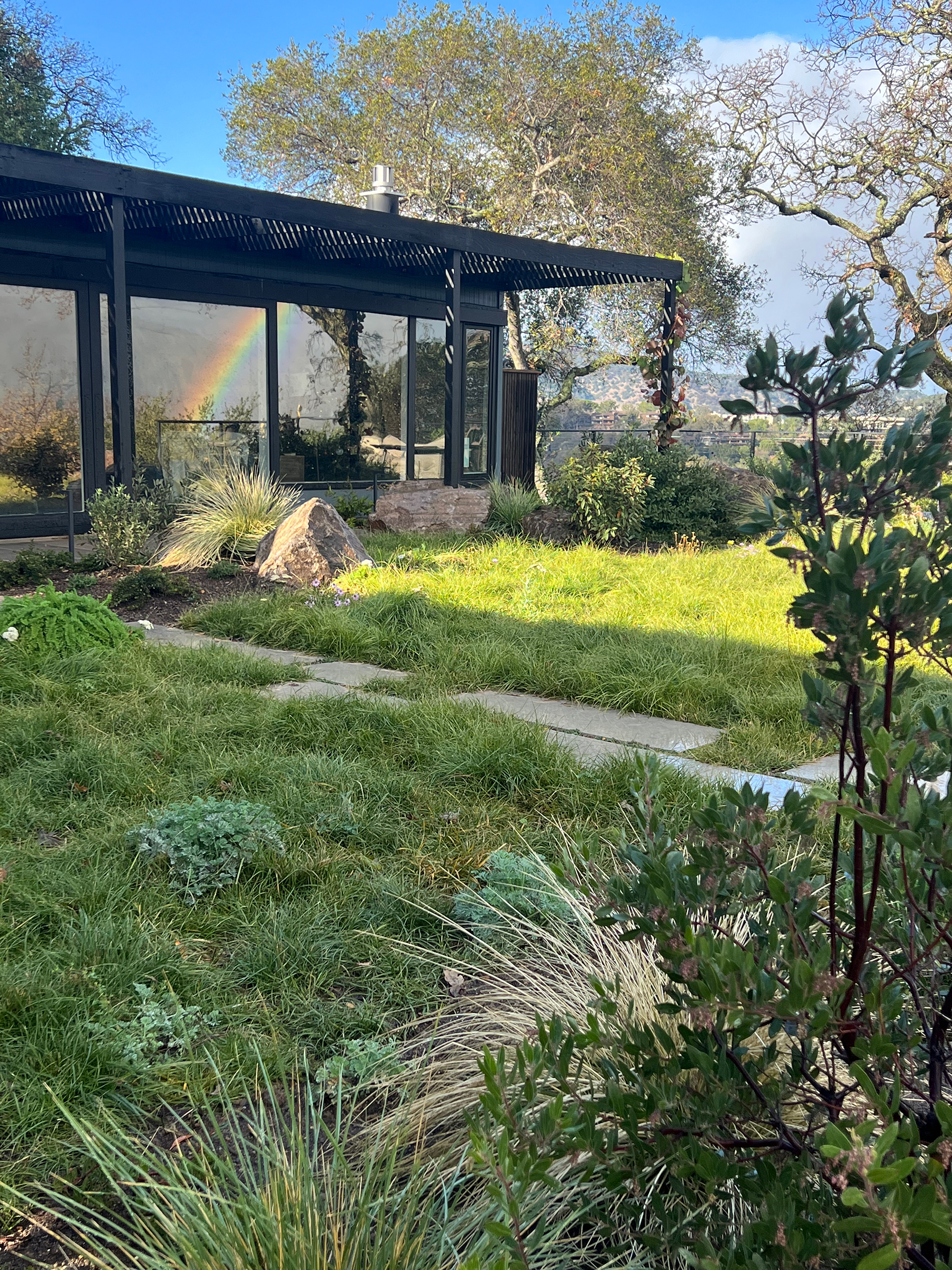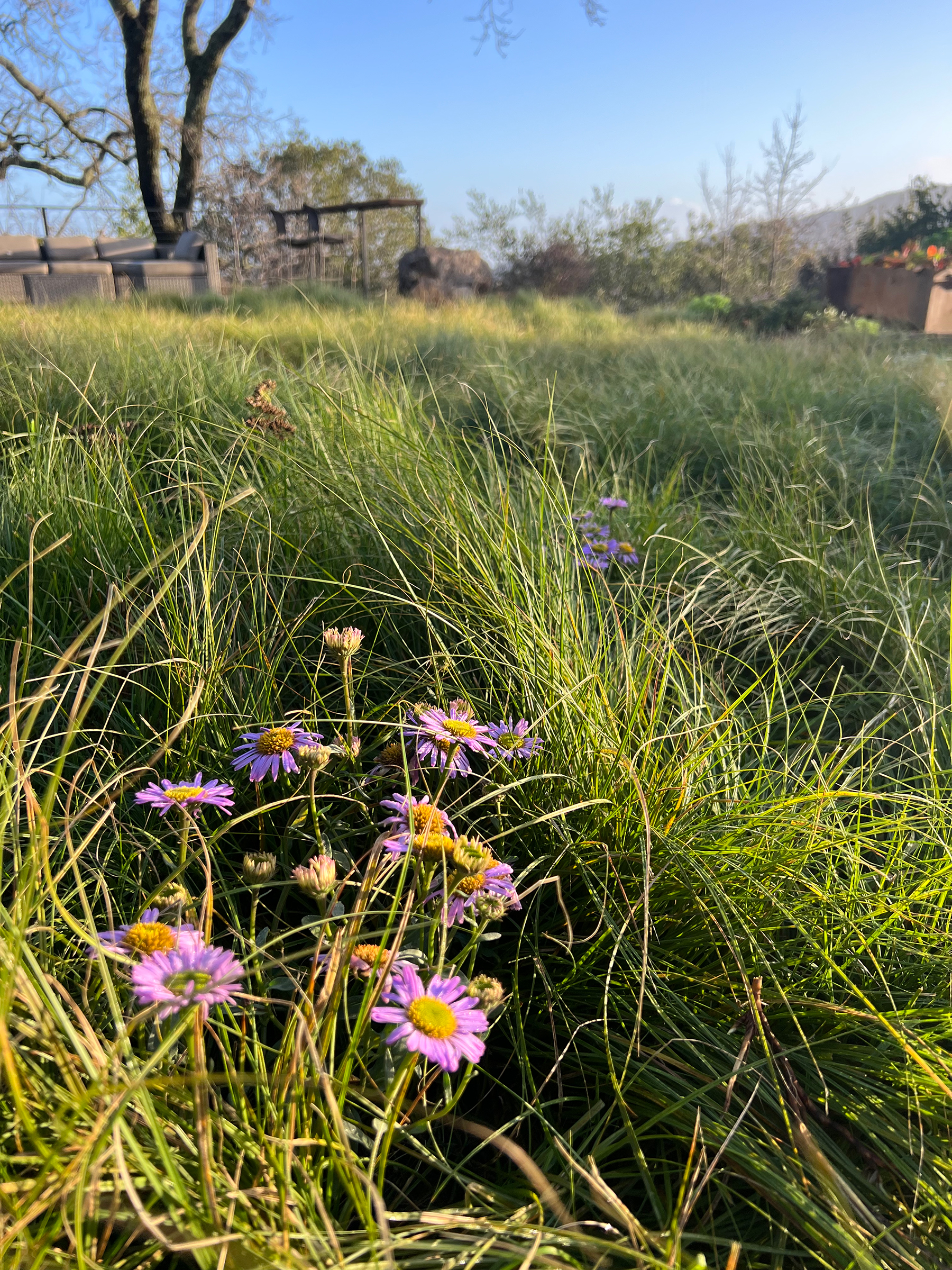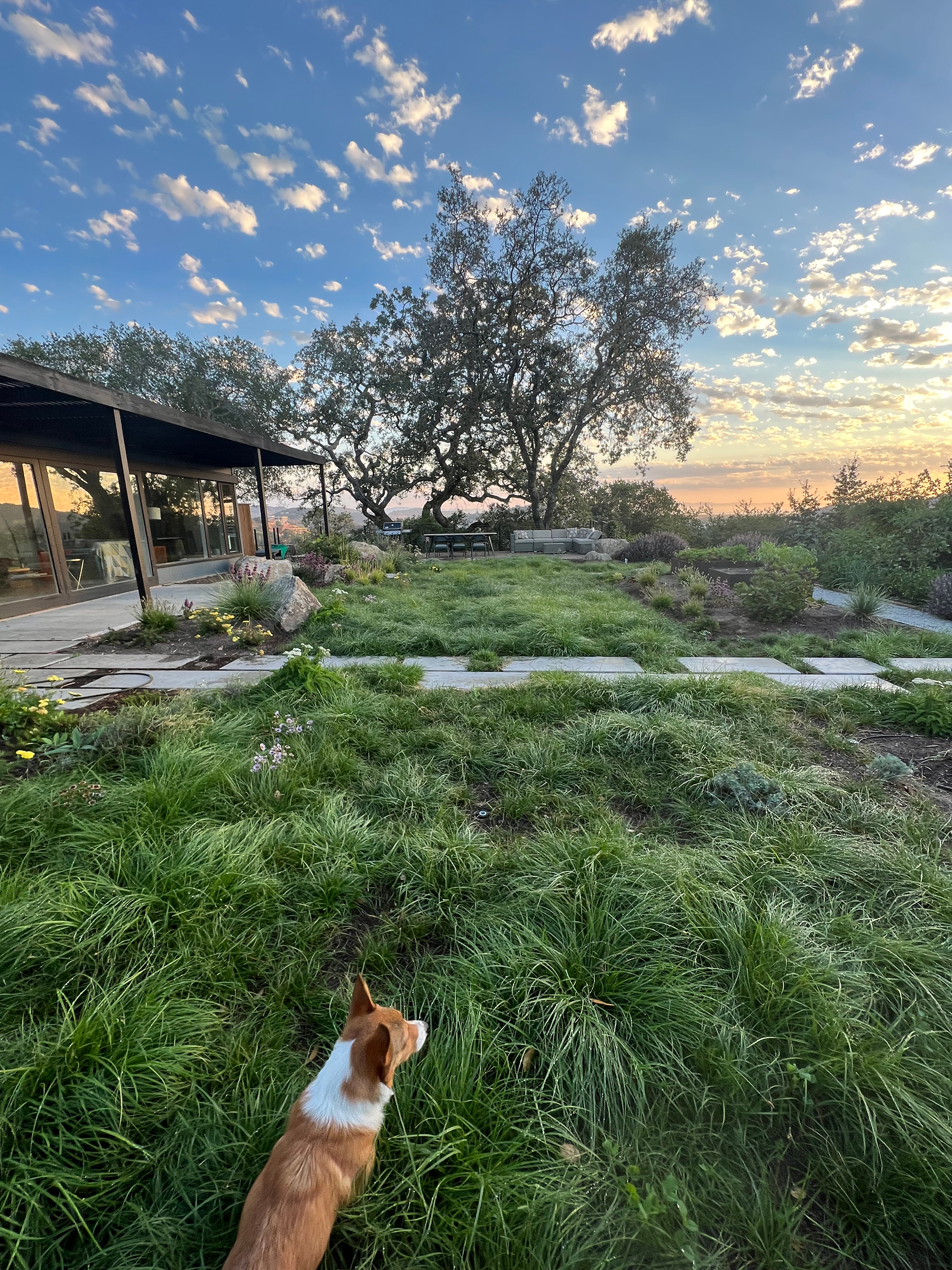
5 Easy, No-Fail Lawn Alternatives for Every Type of Yard
How to make ground covers work in your low-water garden.

Christian Douglas
This article is part of our new 8-week, limited edition newsletter series, The Low-Water Gardening Guide, where we’ll walk you through what it takes to create a sustainable garden, from swapping in the appropriate plants to new irrigation methods to the tools you’ll need and more. Sign up here to get each installment straight to your inbox.
Ground covers tend to be an afterthought in most gardens. What might seem like such a small piece of the overall landscape design is actually an incredibly hard-working hero. Not only do these low-growing plants reduce water runoff and erosion, they purify the air, lower the ambient temperature, and encourage biodiversity by creating crucial habitats for birds and pollinators.
We chatted with Christian Douglas, who not only designs gorgeous award-winning, low-water landscapes for his clients, but has recently undergone an extensive lawn-to-meadow project of his own. Whether you’ve just completed a full lawn removal or you’re looking to give life back to a neglected side-yard situation, we hope these ideas inspire you to re-think growing from the ground up this spring.
How to Prep and Plan
There are a lot of considerations to take into account when looking for appropriate ground covering, but once you identify the main purpose of your space and how much you want to look after it, the right plants will easily fall into place. Will the area be high-traffic? Do you want the appearance and maintenance of a lawn or keep it no-mow? Are you dealing with full sun or partial shade? Are there shrubs or trees for these ground covers to interact with? So many, many questions to ask yourself, but by making a list of site conditions and goals, you’ll narrow down your choices to a very specific few.

Christian Douglas
How to Install
Every garden project comes with praise for proper prep—by creating favorable conditions your plant’s roots will spread and take hold, making for long-term growing success. In addition to proper lawn removal, Christian suggests de-compacting heavy soils and integrating organic material, which are both key for trouble-free transplanting. Additionally it’s important to “ensure some level of drainage, especially to avoid standing water during extended heavy rain events.”
When it comes to lawn alternatives, there is no “rolling out the sod” quick fix with most ground covers. Christian, from his own experience, likes to promote the virtues of sedge meadows carefully assembled with 2-inch Carex plugs, which admittedly take longer to establish. He advises using a local organic soil mix integrated into the native clay and then hand placing each plant plug 6 to 12 inches apart. Keep in mind that the closer you plant your plugs, the quicker the area will fill in, but in turn there’s a greater cost to the project.
Christian encourages you to not be overwhelmed and to think about it as “a zen-like practice of lovingly planting dozens of rows of small plugs. As with most investments, patience is key, but the payoff is well worth it.”

Christian Douglas
How to Choose the Right Ground Cover
Every garden has its own unique microclimate, so the same should be true when choosing your ground covers. While native plants are a preferred choice for biodiversity, we encourage you to explore them as a primary consideration and then fill in with other water-wise alternatives depending on your specific space and needs.
Christian suggests keeping appropriate scale in mind: “Children, dogs, and family picnics can all still happen in a much smaller space allowing you to integrate a flat, green meadow to rest your eyes among other landscape elements.” For higher-traffic areas, keep the larger mounding plants as borders, but most importantly choose a ground-cover species that can offer benefits for your local habitat.
Hearty Lawn Alternative:
For Christian’s personal meadow project, he is experimenting with native sedge as an alternative to conventional grass. “Carex pansa (meadow/dune sedge) is an appropriate choice for our region in the Bay Area,” he says. “It requires less water than the ‘no-mow’ sod alternatives, it is harder-wearing, and could be mowed and also be used for recreation/play. As one would expect with a native meadow species, it’s a wonderful habitat beacon that tolerates living alongside other beneficial plants.”
If you’ve been eyeing those tempting “no-mow” fescue sod mixes, Christian has thoroughly tested them and advises that they have always underwhelmed in terms of water needs, usability, and maintenance. It proves once again that ease of install isn’t always the best choice.
Native Bunch Grasses:
Looking for a little drama pop? Native bunch grasses offer high impact with low maintenance, sending extensive root systems into the soil, which help them survive dry summers while controlling erosion on slopes. For coastal and cooler regions, Deergrass (Muhlenbergia rigens) is a great choice that can even take partial shade with little need for watering once established. For hotter climates, Blue Grama (Bouteloua gracilis) thrives as a meadow grass, with gorgeous green to grayish color and bobbing seed heads.
High-Traffic Walkways:
Whether you’ve got some pavers you want to fill in, or are looking to soften the look of your planting beds, low-spreading ground covers are a great way to add color and texture to any garden—even better if it can take some foot traffic. Kurapia (Lippia nodiflora) has become a popular choice as both a filler and lawn replacement. Highly ornamental, it has a profuse, warm season flowering that attracts pollinators. Additionally, Yerba Buena (clinopodium douglasii) is another creeping, mat-forming perennial that is great for the cooler climates towards the coast and Northwestern states, looking particularly gorgeous in rock gardens.

Christian Douglas
Pollinator Paradise Meadow:
Where there are blooms, there are bees! As romantic as the idea of a swaying meadow in the middle of your garden sounds, keep in mind that these areas should be limited to lower-traffic areas to not disturb its tiny visitors. Yarrow, milkweed, and fuchsia (Epilobium canum) all make for nectar-rich native additions to any garden and offer food support for both butterflies and their larvae.
Christian notes that they’ve really enjoyed adding native wildflowers within their meadow. Yarrow, Erigeron, and Eschscholzia spice things up around the perimeter, adding a bit more diversity and visual interest than just a blanket of California poppies.
Fast-Growing Pioneers for Borders and Hillsides:
Not all ground covers are micro; in fact, some can grow to be up to two feet tall, which are the perfect considerations for slopes, hillsides, and borders. California bush sunflower, buckwheat, and sagebrush all aid in soil erosion while providing beneficial wildlife support. Additionally lower spreading varieties of Ceanothus, such as ‘Yankee Point,’ can make for a stunning slope-side accent which blooms in the late winter, providing a much needed seasonal pollinator pit stop.

Christian Douglas
Post-Planting Maintenance Tips
Even the lowest maintenance of gardens need weekly monitoring to stay ahead of potential problems or setbacks. “Check in regularly,” Christian suggests. “Weeds will want to grow in the fresh soil between plugs and plantings.” Hoeing between rows and hand-weeding is good practice as the plants start to fill in.
Where most native and low-water plants will not need subsequent watering after the first two years of establishing, it’s not a bad idea to set up a combination of micro-sprays or subsurface drip irrigation during early establishment.
Even if you aren’t replacing a lawn, we hope this spring you consider adding a few ground covers to your garden plans. A new world of color, texture, biodiversity, and healthier plant ecosystems awaits! While we were only able to scratch the surface here, we encourage you to gather more information for your personalized plant needs. Check out your city’s Native Plant Chapter or Pacific Horticulture and get to know your localized plant community!
Read the Current Issue Here!
Get one year of Sunset—and all kinds of bonuses—for just $29.95. Subscribe now!
